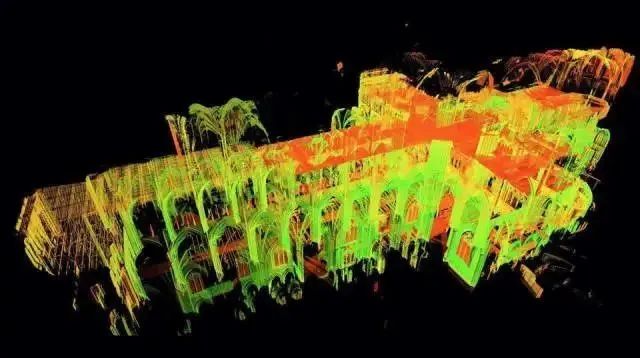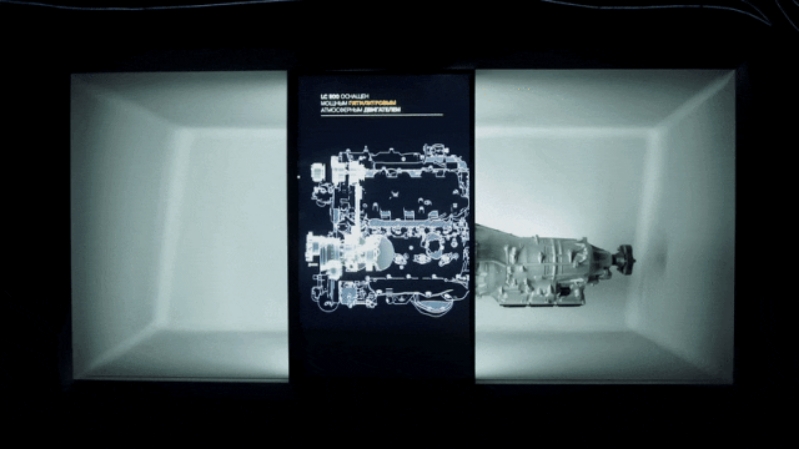Digital Protection of Collections is the Key
According to reports, a batch of gold and cultural relics were recently stolen from the British Museum's warehouse. The cultural relics span from the 15th century BC to the 19th century AD. This theft has caused incalculable losses to both the British Museum and global culture.
According to reports, a batch of gold and cultural relics were recently stolen from the British Museum's warehouse. The cultural relics span from the 15th century BC to the 19th century AD. This theft has caused incalculable losses to both the British Museum and global culture.
This is not the first time that the British Museum has been visited by thieves. In the past 30 years alone, there have been many thefts:
In 1993, a Roman-era coin was stolen; in 2002, a 2,500-year-old Greek statue was stolen; in 2004, Chinese gemstones disappeared from the museum; and in 2017, a £750,000 Cartier diamond was revealed to have been stolen in 2011 Years stolen.
According to statistics, the British Museum has lost nearly 2,000 cultural relics. As the largest museum in the world, the British Museum has more than 8 million collections. Security is not only the only problem it faces. Once it encounters other emergencies, as well as environmental humidity, temperature, insect infestation, man-made damage and other unpredictable factors will cause irreparable losses.
As non-renewable cultural resources, how can we save cultural relics that are constantly disappearing? A game from 9 years ago may give us some answers.
The fire of Notre Dame de Paris in 2019 caused the iconic spire to collapse, two-thirds of the roof to be destroyed, and the entire building to be severely damaged. How to find its appearance before the damage and restore it as it became the biggest problem faced at the time.

At this time, "Assassin's Creed: Unity", a game produced by the famous game company Ubisoft, provided an important reference for the restoration of Notre Dame de Paris. According to reports, in the early stages of game development, Ubisoft designer Caroline Miousse spent two years visiting and studying Notre Dame de Paris, mapping and scanning the entire building, and finally made a model with an accuracy of almost 1:1. 3D digital model.

Through modeling of real scenes, it provides the most intuitive reference for the restoration of cultural relics and historic sites.
What happened to the British Museum is just a microcosm of the situation of modern cultural relics. As a large country with a history of five thousand years of civilization, our country has the largest and oldest historical relics in the world. However, it is a pity that many cultural relics and historic sites have not been completely preserved. According to statistics from the Third National Cultural Relics Census, more than 40,000 immovable cultural relics have disappeared across the country in the past thirty years. The issue of cultural relic protection cannot be ignored.
As a leading 3D digital solution provider in the industry, the 3D digital solution for cultural museums integrates smart protection, smart service, and smart management, and is committed to providing digital protection for museums and culture, and inheriting China's five thousand years of splendid civilization. At present, the building blocks have served 100+ museums, provided 100+ equipment for cultural and museum enterprise research institutions, and provided a total of 30,000+ cultural relic modeling services. It has rich service experience in the cultural and museum industry.
The secret of the “immortality” of cultural relics:3D digital archive
The three-dimensional digitization of cultural relics is the first step in modern cultural relics protection.
The significance of three-dimensional digitization of cultural relics is that cultural relics can be preserved in digital form. On the one hand, it can reduce the secondary damage suffered by cultural relics during the excavation and restoration process. On the other hand, it can also provide information for subsequent display, restoration and other research of cultural relics. More convenient means.
Foxtech Robot has a variety of handheld, tile, and box scanners to meet the needs of digital scanning and archiving of ancient books, calligraphy, paintings, porcelain and other cultural relics, and can provide customers with standardized and engineered 3D scanning and modeling solutions for cultural relics.
Three-dimensional modeling of cultural relics - data collection.
Through Foxtech Robot's automated 3D scanner, the overall 3D structural data of cultural relics can be obtained in just a few minutes without the need for spot placement. The accuracy reaches nanometer level and the surface details of the cultural relics can be restored in depth.
Cultural relic model editing - data processing.
The scanned 3D data can be instantly imported into Foxtech Robot's Ruler3D model editing software to complete intelligent model repair and texture, material, mesh and other in-depth editing options.
Model export and sharing - data application.
Ruler3D can generate highly restored 3D color models and supports exporting a variety of common formats (obj, fbx, stl, glb, gltf, dae, 3ds) to meet different display and development needs.
For large-scale cultural relic scenes, such as digital projects for the protection of ancient architectural heritage, Foxtech Robot has a professional engineering modeling team of more than 100 people. With the help of on-board laser scanning and aerial oblique photography, it can obtain large-scale spatial geographical information to form digital elevation models, digital Orthophotos help customers achieve 3D scanning and reconstruction of larger scenes. Assist cultural and museum institutions to comprehensively protect and manage ancient architectural heritage and achieve secondary development of the cultural value of ancient architectural heritage.
Create "electronic archives" for cultural relics: Wenbo Intelligent Management Platform
After obtaining the three-dimensional data of cultural relics, we can create electronic archives of cultural relics to provide convenient tools for the management, restoration, display, and application of digital cultural relics resources, and assist cultural and museum institutions in conducting more refined management of digital cultural relics.
Intelligent protection system - cultural relic protection
Due to the age of cultural relics, pathological phenomena such as moisture, mildew, acidification and aging are relatively common. Therefore, cultural relics management is the central link in museum work and the basis for museums to carry out exhibitions, education, research and other work.
Let cultural relics "come alive": Digital application of cultural relics
Cultural relic restoration and derivatives development
After a long history, most of the unearthed cultural relics are not in complete form, especially the cultural relics in Sanxingdui. They have also experienced man-made destruction and long-term natural erosion, posing huge challenges to the personnel who restore cultural relics. The traditional method is to judge and repair based on photos, or to repair using molds, which is not efficient and accurate enough.
Three-dimensional models based on cultural relics or cultural relic fragments can be digitally and virtually repaired without damaging the original cultural relics, which greatly reduces the difficulty of splicing and effectively improves the efficiency of repair. The restored three-dimensional model can present the original integrity and color information of the cultural relics, providing an important reference for archaeologists in their restoration work.

After being unearthed, many cultural relics have suffered from pathological phenomena such as moisture, mildew, acidification and aging to varying degrees, and should not be displayed too much.
In response to this situation, the combination of cultural relic scanning data and 3D printing technology can achieve high-precision reproduction of cultural relics, which not only protects the authenticity of the cultural relics, but also expands their value. The replicas can be sold as merchandise in the museum, allowing the audience to "bring the cultural relics back." The idea of "home" is to pass on these precious cultural relics.
Three-dimensional scanning data also brings higher possibilities for cultural creation to museums. It combines the cultural elements of cultural relics with modern artistic expressions to carry out secondary development of cultural relics, so that the cultural relics can be presented to modern people in a more popular form, satisfying Consumer groups with different aesthetics and needs achieve the perfect integration of traditional culture and modern art.
With the help of panoramic acquisition technology, it is possible to build a museum exhibition hall that replicates the real scene, lay out cultural relics in the cloud, and create a virtual immersive experience, helping cultural and museum institutions create a never-ending online museum that audiences can access anytime, anywhere, 24 hours a day.
Even for non-physical museums, 3D digital technology can be used to realize online exhibitions. Through Foxtech Robot's exhibition layout tool, customers can customize the building area, design virtual exhibition halls, and seamless transitions between exhibition halls. , planning, design, typesetting, layout, etc. of exhibition content to create a more stylized cultural exhibition hall.
Augmented reality AR experience

Using three-dimensional simulation technology to "deep process" cultural relics, the audience can deeply deconstruct cultural relics and see every inch of the "skeleton" of the cultural relics, which enhances the sensory experience and has the characteristics of immersion, three-dimensionality, interactivity, etc., making the cultural relics more authentic The display is more three-dimensional.
Interactive Display Wall Experience
In the future, museums will be more and more deeply integrated with digital technology, which will comprehensively transform the original methods of cultural relic protection, restoration, display and research.
At present, well-known cultural and museum institutions such as the National Museum of China, Hainan Provincial Museum, Heilongjiang Provincial Museum of Ethnology, Jiangxi Provincial Museum, Nanchang August 1st Uprising Memorial Hall, National Museum of Natural History, and Datang West Market Museum have introduced Bricks to build smart cultural and museum solutions.
Foxtech Robot uses leading 3D digital technology to build a digital cultural museum experience for customers in the cultural and museum industry, and provides a full set of services in cultural relic protection, cultural relic management, and cultural relic development to help cultural and museum institutions embrace digital transformation.
- Reinforcement Learning Enables Bipedal Robot to Conquer Challenging Terrain
- Drones for 3D Indoor Exploration-Cultural Relics Protection and Indoor Survey
- Industry Application: Intelligent Unmanned Operation Solutions for Lakes – Rapid Deployment for Continuous Protection
- High-Altitude Cleaning Case Introduction - Drone Spraying and Cleaning
- New Performance: SLAM Handheld Lidar Scanner + External Panoramic Camera New Combination


